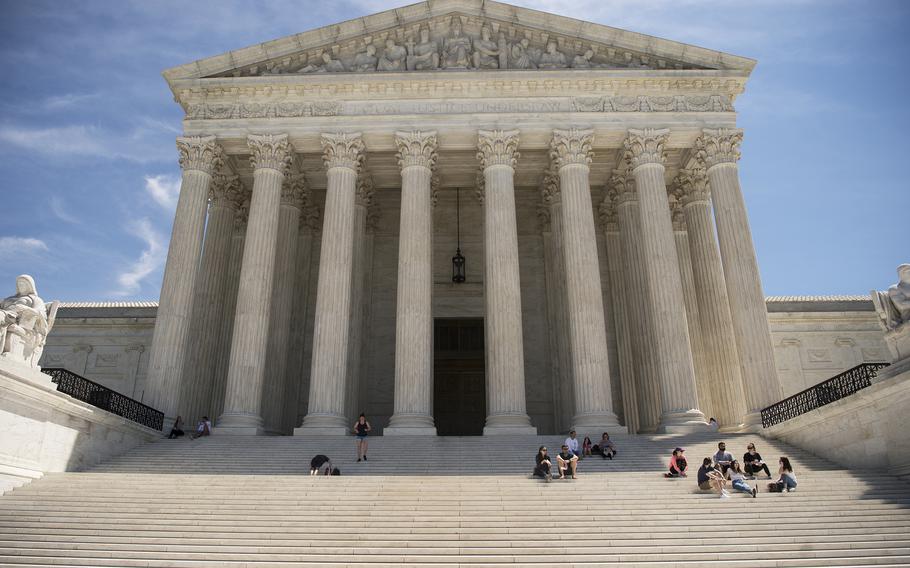In “Tinker, Tailor, Soldier, Spy” — John le Carré’s classic novel about the hunt for a traitor near the top of British Intelligence — the hero, George Smiley, tells a colleague that “the art” of being a mole “is to be one of a crowd.” The greater the number of suspects, the smaller the possibility of being caught. Smiley is hauled from retirement to conduct some quiet detective work precisely because the alternative is a massive investigation that would disrupt and perhaps destroy the very institution it’s designed to protect.
That’s the territory the U.S. Supreme Court is poised to enter. According to news reports, the search for the leaker of Justice Samuel Alito’s proposed abortion opinion has led to demands that law clerks sign affidavits under penalty of perjury and allow inspection of their cellphone records. A sitting federal judge has joined the loud clamor for a criminal investigation.
This isn’t shattered trust; it’s self-immolation.
And all because the leaker, described by some as a hero, prefers to remain hidden in the crowd.
With some law clerks reportedly seeking legal counsel, one can well imagine a course of events that ends in litigation, after a clerk who refuses to turn over cellphone data is fired, then sues for wrongful termination. (Key query for another day: Would the justices recuse themselves from the lawsuit?)
To be sure, internal investigations are a commonplace of our era. In some fields of endeavor, they’ve become sufficiently ubiquitous that the psychological literature includes advice on how to survive the process. And when it comes to leaks from the judicial branches, investigations are not new.
In 1938, for example, The Philadelphia Inquirer published a story predicting, correctly, that the Pennsylvania Supreme Court was about to strike down several new state laws restricting grand jury investigations. The furious justices interrogated the city editor, who implausibly explained that he had no sources inside the court and had based his prediction on the oral argument and a study of recent decisions.
In 1939, an incensed Illinois judge demanded to know why a prisoner he’d ordered released, one Raymond Scott, had been rearrested. He was told that the attorney general’s office had received a tip that the Illinois Supreme Court was about to overturn the order and send the defendant back to jail. Thus, the prosecutor explained, “we moved to get Scott before he could flee.” The judge announced that he would undertake an investigation into how word of a pending decision got to the attorney general’s office. History does not record the result, but it is surely worth noting that the tip turned out to be wrong.
As everyone’s been pointing out, the Supreme Court has hardly been exempt from worry over leaks. A 1919 leak of a pending railroad decision led to profiteering in the stock market, and criminal charges.
But the justices have often used more discretion in responding. A 1935 Washington Post piece about the justices’ penchant for secrecy refers to a past incident in which, when a leak was suspected, “the court quietly disposed of the matter by internal investigation.”
Since the leak of Alito’s proposed opinion, many outlets have run stories reminding us that the result in Roe itself leaked back in 1973, in an issue of Time magazine that hit the stands shortly before the decision was handed down. Then, too, there was talk among the justices of an internal investigation, perhaps even including lie detector tests. Then, too, there were fears that so intrusive a hunt would shake the foundations of the very institution it was supposed to protect.
But we should also remember the denouement. The law clerk in question, appalled at the potential damage to the institution, bravely came forward. He confessed to his boss, Justice Lewis Powell, and offered to resign. Powell forgave his clerk but sent him to see Chief Justice Warren Burger. Burger gave the young man a stern talking-to and sent him about his business.
Perhaps the leaker of Alito’s opinion possesses sufficient nobility to publicly admit culpability, and so avoid further damage to the trust that the institution requires. Else the momentum of investigation might prove unstoppable. Perhaps the leaker is too much a coward; or too much a careerist. But those of us who even in this day and age still admire the Supreme Court must hope that rather than hide in the crowd like Smiley’s mole, the leaker will decide that the time has arrived to come in from the cold.
Bloomberg Opinion columnist Stephen L. Carter is a professor of law at Yale University and author of “Invisible: The Story of the Black Woman Lawyer Who Took Down America’s Most Powerful Mobster.” This column does not necessarily reflect the opinion of the editorial board or Bloomberg LP and its owners.

The U.S. Supreme Court as seen on May 2, 2020, in Washington D.C. (Carlos Bongioanni/Stars and Stripes)